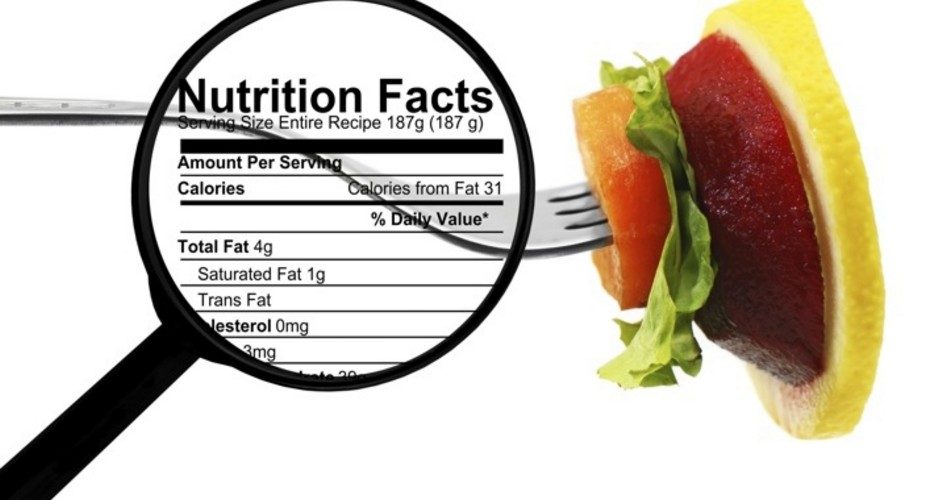
Speaking from the East Room of the White House on February 27, first lady Michelle Obama announced upcoming changes to the FDA’s Nutrition Facts label — the ubiquitous chart found on about 700,000 food and beverage products sold in the United States.
The event was kicked off by introductory remarks from Kathleen Sebellius, secretary of Health and Human Services, who introduced the next speaker, Margaret Hamburg, the Food & Drug Administration commissioner. A release issued by the White House’s Office of the First Lady said: “The updates announced today support the First Lady’s Let’s Move! initiative in its ongoing efforts to provide parents and families with access to information that helps them make healthier choices.”
Thursday marked the fourth anniversary of Let’s Move!, the initiative announced by Mrs. Obama on February 9, 2010 with the stated goal of “solving the challenge of childhood obesity within a generation so that children born today will reach adulthood at a healthy weight.”
A description of the proposed changes to the FDA’s Nutrition Facts label was provided in the Office of the First Lady release:
• Require information about the amount of “added sugars” in a food product. Based on the 2010 Dietary Guidelines for Americans determination that calorie intake from added sugar is too high in the U.S. population and should be reduced. The FDA proposes to include “added sugars” on the label to help consumers know how much sugar has been added to the product.
• Update serving size requirements to reflect the amounts people currently eat. What and how much people eat and drink has changed since the serving sizes were first put into place in 1994. By law, serving sizes must be based on the portion consumers actually eat, rather than the amount they “should” be eating.
• Present calorie and nutrition information for the whole package of certain food products that could be consumed in one sitting or in multiple sittings.
• Refresh the format to emphasize certain elements, such as calories, serving sizes and Percent Daily Value, which are important in addressing current public health problems like obesity and heart disease.
The suggestion to update the “serving size requirements to reflect the amounts people currently eat” because “how much people eat and drink has changed since the serving sizes were first put into place in 1994” defies both logic and human behavior. Anyone who is serious about losing weight follows not the “serving size” mandated by the FDA on packages, but the portions recommend by whatever diet they are following, whether it comes from their doctor, a nutrition magazine, or a weight loss group, such as Weight Watchers. These guidelines are not formulated to reflect how much people currently eat, because if people are overweight it indicates that the amount they currently eat is too much!
Helping people achieve better nutrition by increasing the serving sizes listed on packages makes as much sense as reducing traffic accidents by increasing speed limits to reflect how fast people currently drive.
At the latest event, the first lady said, “Our guiding principle here is very simple: that you as a parent and a consumer should be able to walk into your local grocery store, pick up an item off the shelf, and be able to tell whether it’s good for your family. So this is a big deal, and it’s going to make a big difference for families all across this country.”
During her talk, the first lady described what she felt were deficiencies in the current Nutrition Facts label and the supposed difficulties she believes most shoppers have in understanding them:
Your resolved to read those labels and only buy foods you thought were healthy for you and for your kids…. You squinted at that little tiny label and you were totally and utterly lost. So there you stood alone in some aisle in a store, the clock ticking away at the precious little time remaining to complete your weekly grocery shopping, and all you could do was scratch your head, confused and bewildered and wonder: Is this too much sugar in this product? Is 50 percent of the daily allowance of riblofavin a good thing or a bad thing? And how on Earth could this teeny little package contain five whole servings? … All you really wanted to know was: Should I be eating this or not? Is this good for my kids or not? And if it is healthy, how much of it should I be eating? But unless you had a thesaurus, a calculator, a microscope, or a degree in nutrition, you were out of luck.
Undoubtedly, some shoppers really have difficulty in understanding the present Nutrition Facts label. And just as certainly, many shoppers will have equal difficulty in understanding the “new and improved” Nutrition Facts label. This is because the problem is not the labels, but a lack of understanding of basic nutrition among consumers. This problem might be overcome in many ways, including consumers educating themselves by reading nutrition journals written in everyday language, such as Prevention, Body & Soul, Nutrition Today, Men’s Health, Women’s Health, Health Magazine, and many others sold in supermarkets.
Mothers concerned about proper nutrition for their children have many other resources available to them if they need guidance in providing proper nutrition for their families, including their family doctors and health and nutrition programs conducted in their communities. Newsletters providing information on such programs are often found in physicians’ waiting rooms.
A report in the Christian Science Monitor notes that the public will have 90 days to comment before a final label is developed, after which manufacturers will have two years to make the required changes, which are expected to cost about $2 billion. As to who will pay for the $2 billion needed to make the labeling changes, consumers should not be surprised when prices in supermarkets increase even more than expected over the next two years.
A more fundamental issue is determining exactly where the federal government derives its authority to regulate food products. We can trace the existence of the FDA back to its formation over a century ago (1906). The Pure Food and Drug Act was passed that year largely due to the public outcry prompted by publication of The Jungle, a muckraking novel written by Upton Sinclair exposing poor conditions in the meatpacking industry.
While Sinclair’s allegations of unsanitary conditions in meatpacking plants may have been well founded, they led to an unsatisfactory solution to the problem — bigger and more intrusive government at the federal level. Sinclair’s background is entirely consistent with this approach, since The Jungle was originally published in serial form in the socialist newspaper Appeal to Reason.
Sinclair founded the utopian Helicon Home Colony in Englewood, New Jersey, using proceeds he earned from The Jungle. He also ran for Congress unsuccessfully as a Socialist.
President Theodore Roosevelt wrote about Sinclair in a letter to Progressive movement leader William Allen White: “I have an utter contempt for him. He is hysterical, unbalanced, and untruthful. Three-fourths of the things he said were absolute falsehoods. For some of the remainder there was only a basis of truth.”
After Roosevelt read The Jungle, he ordered an investigation of the meat-packing industry. He also met Sinclair and told him that while he disapproved of the way the book advocated socialism, he agreed that “radical action must be taken to do away with the efforts of arrogant and selfish greed on the part of the capitalist.”
Roosevelt signed the Pure Food and Drug Act into law on June 30, 1906.
Since the Constitution does not delegate the power to regulate food and drugs to the federal government, according to the 10th Amendment, those powers are reserved to the states. However, such constitutional restrictions apparently have never bothered presidents Theodore Roosevelt through Barack Obama.
Related articles:
Michelle Obama and USDA to Ban Junk Food Ads in Schools



